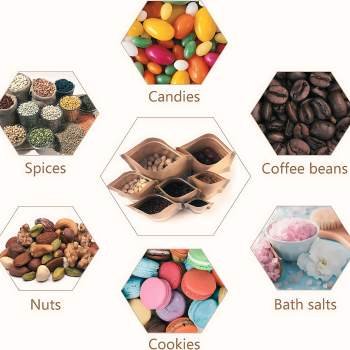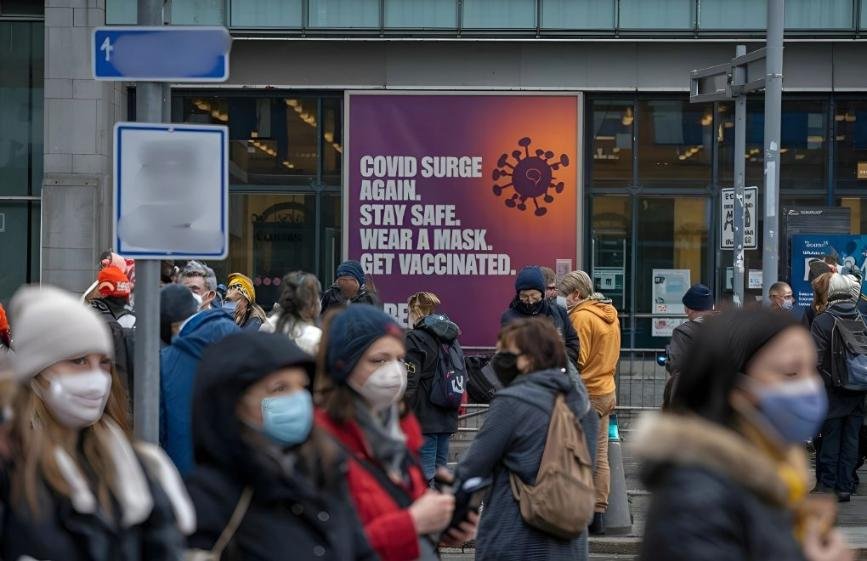Introduction: The Unseen World of Packaging
Packaging quietly safeguards our everyday experiences. It is a hidden science that envelops us throughout the day, from morning till evening. Each food item and product we handle is enveloped in a thoughtfully crafted protective covering. But it is far more than a simple container.
The Global Packaging Landscape
Our world moves on the packaging. The global industry is valued at more than $900 billion. Packing is omnipresent in various aspects of human activities, ranging from small food packets to large shipping containers. It conserves food, shields products, and links manufacturers to consumers.
Science Behind the Packaging
Packaging science is a complex blend of multiple disciplines. It combines:
Chemistry
Materials engineering
Food safety research
Environmental conservation
Consumer behavior studies
Modern packaging isn’t just about holding something. The focus is on ensuring safety, fostering communication, and supporting environmental stability. Every package narrates a tale of human creativity, progress in technology, and our connection with the environment.
Why Package Matters
Every package represents a critical intersection of:
Food preservation
Health safety
Environmental impact
Economic efficiency
Consumer experience
Comprehending wrapping involves grasping our interactions with the world that surrounds us.
Exploring the Intriguing World of Packing Science
Packaging transcends being a mere container; it plays a multifaceted role. It is a fascinating area of scientific research that intertwines chemistry, materials engineering, food safety, and environmental preservation. Beyond simply containing products contemporary packing serves a host of purposes. It safeguards food from contamination, prolongs shelf life, reduces waste, and conveys important details to consumers.
Historical Evolution
Packaging has come a long way. Ancient civilizations used leaves, clay pots, and animal skins. Today, we have sophisticated materials designed with precision. Each wrapping solution tells a story of human innovation and scientific advancement.
Health Impacts of Food Packaging
Chemical Migration Concerns: A Deeper Scientific Perspective
What is Chemical Migration?
Chemical migration occurs when packaging materials transfer molecules into food. This process happens through:
– Direct contact between packing and food
– Temperature changes
– Extended storage periods
– Chemical interactions between food and packing materials
Primary Chemical Offenders
1. **Bisphenol A (BPA)**
– Frequently discovered in plastic containers
– Leaches more rapidly at high temperatures
– Applied in food canister linings and plastic bottles
2. **Phthalates**
– Plastic softening chemicals
– Prevalent in flexible packaging materials
– Can transport simply during food storage
3. **Per- and Polyfluoroalkyl Substances (PFAS)**
– Applied in grease-resilient food wrapping
– Known as “forever chemicals”
– Extremely persistent in human body
BOX USA Moving Boxes Medium 18″L x 14″W x 12″H 10-Pack | *********************** Corrugated Cardboard Box for Shipping, Mailing, Packing, Packaging and Storage 18x14x12

Honeycomb Packing Paper 12″ x 150ft with 20 Fragile Stickers ***************** Shipping & Moving Supplies ** Small Business Packaging Supplies ** Eco Friendly Bubble Wrap Packing Boxes for Moving **************** 
300 Pcs Kraft Bags with Window Kraft Stand up Pouches Bulk Kraft Zipper Lock Paper Bags Pouches Food Storage Bags Reusable Heat Sealable Bags for Packaging Home Office Business (6 x 9 Inch)

Potential Health Risks: Scientific Evidence
Endocrine System Disruption
Chemicals like BPA mimic human hormones. They can:
– Interfere with hormone signaling
– Cause reproductive system changes
– Potentially impact fertility
– Disrupt metabolic processes
Reproductive Health Challenges
Research links packaging chemicals to:
– Reduced sperm quality
– Hormonal imbalances
– Potential fertility reduction
– Increased risk of reproductive disorders
Cancer-Related Concerns
Some packaging chemicals show potential carcinogenic properties:
– Increased cellular mutation risks
– Potential DNA damage mechanisms
– Long-term exposure correlation studies
Developmental Issues
Prenatal and early childhood exposure may cause:
– Neurodevelopmental changes
– Potential cognitive function impacts
– Altered immune system responses
Metabolic and Weight-Related Risks
Chemical migrations might:
– Influence metabolic processes
– Contribute to insulin resistance
– Potentially impact obesity development
Scientific Uncertainty and Ongoing Research
While evidence suggests potential risks, scientists continue investigating:
– Long-term exposure effects
– Individual variability in chemical responses
– Cumulative impact of multiple chemical interactions
Mitigation Strategies
Consumers can reduce risks by:
– Using glass or stainless steel containers
– Avoiding microwaving in plastic
– Choosing BPA-free packaging
– Storing food at recommended temperatures
Microplastics: The Invisible Threat
Microscopic plastic particles are now found everywhere. They can move from packaging into our food and water. These tiny fragments enter our bodies, creating potential health concerns that scientists are still investigating.
Environmental Challenges of Packaging Waste
Global Waste Statistics
– More than 0.3 billion tons of plastic generated yearly
– Less than 9% of plastic gets recycled
– Oceans contain massive plastic waste patches
– Packaging contributes significantly to global waste problems
Ecological Impact
Packing waste devastates natural ecosystems. Marine life suffers from plastic pollution. Landfills overflow with non-biodegradable materials. Each package we discard creates ripple effects in our environment.
Innovative Solutions
Emerging Technologies
1. **Biodegradable Materials**
– Plant-based wrapping
– Compostable containers
– Substances that break down spontaneously
2. **Smart Packaging**
– Sensors that trace food freshness
– Temperature-responsive containers
– Packing that stretches food shelf lifespan
3. **Sustainable Design**
– Minimalist packing approaches
– Reduced material usage
– Circular economy principles
Breakthrough Research Areas
Nanotechnology in Packaging
Researchers explore nano-materials that can:
– Detect food spoilage
– Provide better protection
– Reduce material waste
– Enhance food safety
Biomimicry in Packing Design
Scientists now study nature’s packaging systems. Fruits and plants provide incredible inspiration for creating efficient, protective packaging solutions.
Consumer Role in Packaging Sustainability
Individuals can make a difference through:
– Choosing products with minimal packaging
– Supporting brands with sustainable practices
– Proper recycling
– Reducing single-use packing consumption
Economic Implications
Sustainable packaging isn’t just an environmental issue. It’s an economic opportunity. Companies investing in green packing solutions gain competitive advantages and meet growing consumer demands.
Future Outlook
Packaging science stands at a critical junction. The next decade will see remarkable transformations. We can expect:
– More eco-friendly materials
– Advanced recycling technologies
– Stricter regulations
– Greater consumer awareness
Conclusion: A Call for Consciousness
Packaging science finds itself at a crucial juncture. We are currently presented with unique challenges and possibilities. The decisions we make today will have a lasting impact on food safety, human health, and environmental sustainability for generations to come.
The Path Forward
The future of demands:
Continuous scientific innovation
Sustainable material development
Stronger regulatory frameworks
Increased consumer awareness
Collaborative global efforts
We do not simply stand by as mere spectators. Every consumer, scientist, manufacturer, and policymaker contributes significantly to the evolution of packing technology.
A Holistic Vision
Imagine packaging that:
Protects food perfectly
Causes zero environmental harm
Supports human health
Communicates effectively
Reduces global waste
This isn’t a distant dream. It’s an achievable goal within our grasp.
Personal and Collective Responsibility
Every package we choose matters. Small actions create massive changes. By understanding packaging science, we become empowered to make informed decisions.
Our exploration into the world of packaging has only just commenced. We have the power to build a safer, healthier, and more sustainable world by focusing on one package at a time.
Frequently Asked Questions
What makes packaging scientific?
It involves complex research on materials, safety, preservation, and environmental impact.
How dangerous are current packaging materials?
Some materials pose potential health risks, but ongoing research helps develop safer alternatives.
Can packaging be completely eco-friendly?
While perfect solutions don’t exist yet, significant progress is being made toward sustainable packaging.
How can consumers help?
Choose products with minimal, recyclable packaging. Support brands committed to sustainability.
What’s the most promising packaging technology?
Biodegradable and smart packaging technologies show immense potential for future developments.










